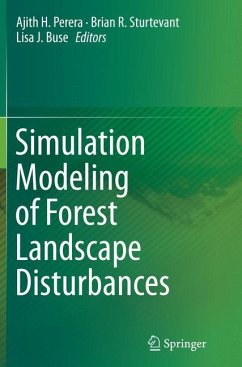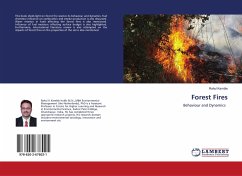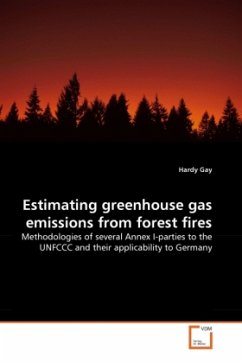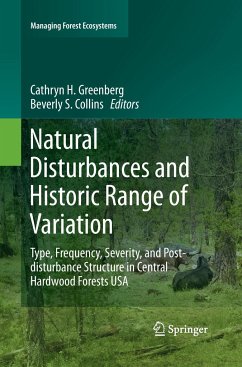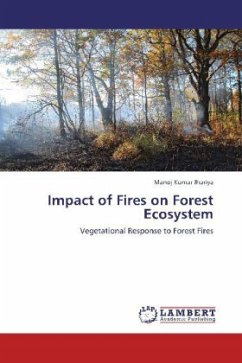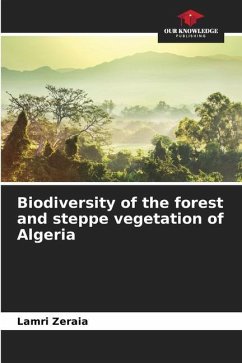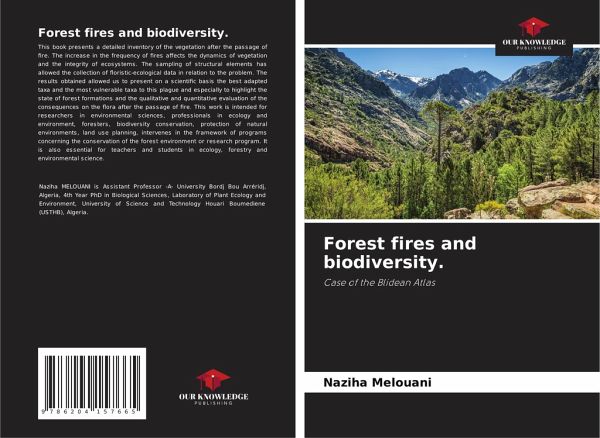
Forest fires and biodiversity.
Case of the Blidean Atlas
Versandkostenfrei!
Versandfertig in 6-10 Tagen
36,99 €
inkl. MwSt.

PAYBACK Punkte
18 °P sammeln!
This book presents a detailed inventory of the vegetation after the passage of fire. The increase in the frequency of fires affects the dynamics of vegetation and the integrity of ecosystems. The sampling of structural elements has allowed the collection of floristic-ecological data in relation to the problem. The results obtained allowed us to present on a scientific basis the best adapted taxa and the most vulnerable taxa to this plague and especially to highlight the state of forest formations and the qualitative and quantitative evaluation of the consequences on the flora after the passage...
This book presents a detailed inventory of the vegetation after the passage of fire. The increase in the frequency of fires affects the dynamics of vegetation and the integrity of ecosystems. The sampling of structural elements has allowed the collection of floristic-ecological data in relation to the problem. The results obtained allowed us to present on a scientific basis the best adapted taxa and the most vulnerable taxa to this plague and especially to highlight the state of forest formations and the qualitative and quantitative evaluation of the consequences on the flora after the passage of fire. This work is intended for researchers in environmental sciences, professionals in ecology and environment, foresters, biodiversity conservation, protection of natural environments, land use planning, intervenes in the framework of programs concerning the conservation of the forest environment or research program. It is also essential for teachers and students in ecology, forestry and environmental science.






